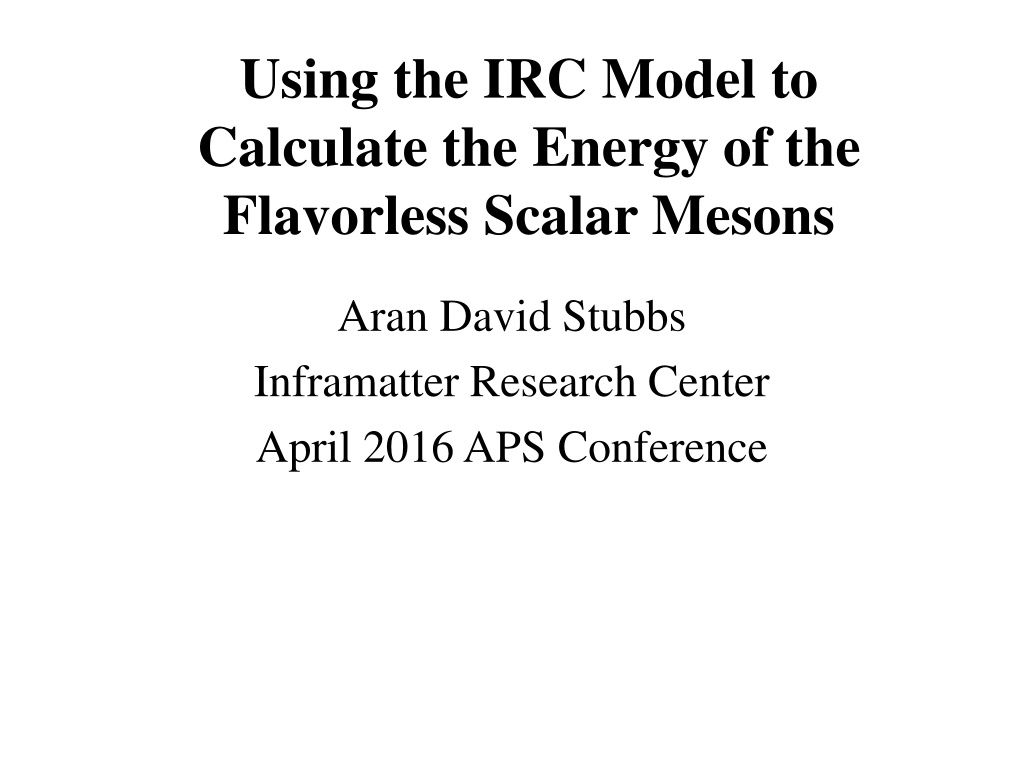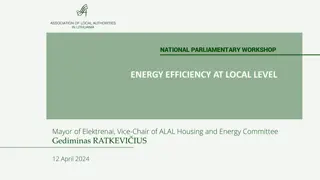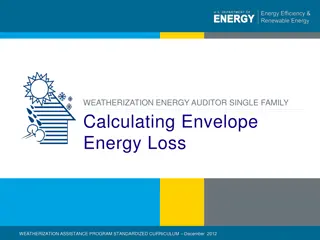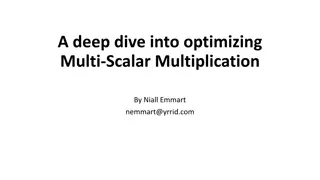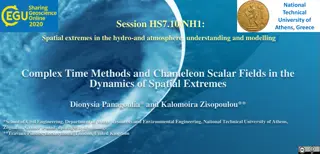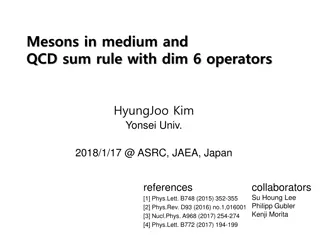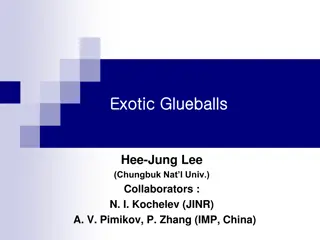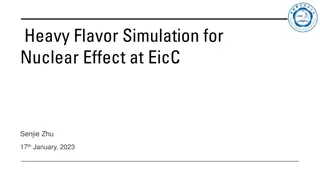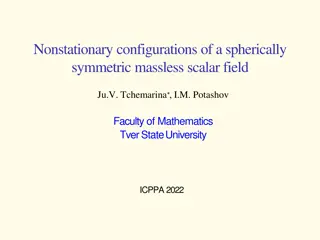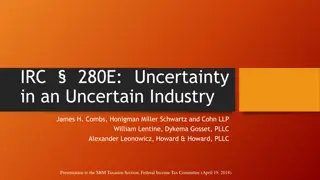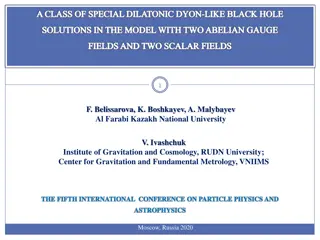Calculating Energy of Scalar Mesons Using IRC Model
Deriving the energy of flavorless scalar mesons through the IRC model offers valuable insights into particle physics. The research conducted by Aran David Stubbs at the Inframatter Research Center and presented at the APS Conference in April 2016 sheds light on this intriguing subject. The study provides a detailed analysis of the energy characteristics of scalar mesons, contributing to the broader understanding of their properties within the field of theoretical physics.
Download Presentation

Please find below an Image/Link to download the presentation.
The content on the website is provided AS IS for your information and personal use only. It may not be sold, licensed, or shared on other websites without obtaining consent from the author.If you encounter any issues during the download, it is possible that the publisher has removed the file from their server.
You are allowed to download the files provided on this website for personal or commercial use, subject to the condition that they are used lawfully. All files are the property of their respective owners.
The content on the website is provided AS IS for your information and personal use only. It may not be sold, licensed, or shared on other websites without obtaining consent from the author.
E N D
Presentation Transcript
Using the IRC Model to Calculate the Energy of the Flavorless Scalar Mesons Aran David Stubbs Inframatter Research Center April 2016 APS Conference
Outline The IRC Model Types of Proto-Matter Structures Scalar Mesons The Pions Other Flavorless Scalar Mesons Conclusion
The IRC Model Layers of Structure Each flavor of Tachyons causes own granularity Proto matter Mezzo matter Infra matter P*: Energy equivalent piece count Infinite number of quarks and leptons possible, with Tauon 5thLepton, Bottom and Up 6thand 8thquark respectively s orbits relate to charge, p to color
Types of Proto-Matter Proto-bosons Neutral, comprised directly of Infra-matter Proto-photon, adhere to charge Proto-gluon, adhere to color Proto-leptons Charged, colorless, comprised of Mezzo-matter Proto-quarks Charged, colored, comprised of Mezzo-matter nthproto-quark has n+1 more s sub-shells than previous proto-quark
Structures Neutral Luxons Charged Leptons 2 proto-quark Single diquark (scalar mesons) 2 monoquark (vector mesons) 3 proto-quark Single triquark (negrons) Diquark plus monoquark (baryons) 3 monoquark (delta class) 4 or more proto-quark
Scalar Mesons Have a single normal matter proto-quark and a single anti-matter proto-quark orbiting together in a single structure Lightest known are Pions, with just proto-up and proto-down. They come in +, -, and 0. Flavorless mesons have a proto-quark and anti- proto-quark of corresponding flavors. They are all, by definition, neutral.
Pions (1) Diquark: 2 proto-quarks in a simple structure Meson: 1 normal matter proto-quark plus 1 anti matter proto-quark Neutral Pion is flavorless: normal matter and anti-matter are equivalent flavors Neutral Pion is Bimodal: alternates between up mode and down mode Charged Pion is either up/anti-down (+ charge) or down/anti-up (- charge)
Pions (2) Up mode neutral pion has P* of 20: 8 pieces in orbits 1s-4s 2 gravitons, 2 proto-quarks, 4 proto-photons Down mode neutral pion has P* of 12: 6 pieces in orbits 1s-3s 2 gravitons, 2 proto-quarks, 2 proto-photons Charged pion has P* of 18: 7 pieces 2 gravitons, 2 proto-quarks, 3 proto-photons
Pions (3) Angular momentum of proto-quarks in charged pion totals 12 small units Net Angular momentum of proto-quarks in neutral pion is zero in either mode 1s graviton s KE in neutral pion is of difference in rest energy between proto-up and proto-down Using the rest energy of the charged pion, and the above 3 assumptions, rest energy of the other 3 calculated: Proto-up 17.95820(4) MeV, Proto- down 37.77024(9) MeV, and neutral Pion 134.97659(34) MeV
Other Flavorless Scalar Mesons Eta Prime has down mode and strange mode Down mode has P* of 42, with 1s-6s orbits Strange mode has P* of 20, with 1s-4s orbits 1s orbit has 1/11thenergy of difference in rest energy Eta Charmed has strange mode and charm mode Strange mode has P* of 72, with 1s-8s orbits Charm mode has P* of 56, with 1s-7s orbits Eta Bottom has charm mode and lucky mode Charm mode has P* of 90, with 1s-9s orbits Lucky mode has P* of 56, with 1s-7s orbits
Conclusion The IRC model adequately explains the energy of the scalar mesons, although the large uncertainty in rest energies of the flavorless versions limits the accuracy of the estimates More work needs to be done to extend the model into the vector mesons, as the 4 or 5 loops involved are more complicated to analyze than the single loop of the scalar mesons Additional information is needed to find the lowest stable energy for the similar 3 quark single loop particles we call negrons
